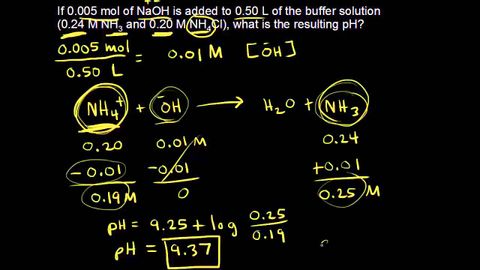
Subtitles & vocabulary
Buffer solution calculations
00
Wayne Lin posted on 2015/09/27Save
Video vocabulary
problem
US /ˈprɑbləm/
・
UK /ˈprɒbləm/
- Noun (Countable/Uncountable)
- Something difficult to deal with or causes trouble
- Question to show understanding of a math concept
- Adjective
- Causing trouble
A1
More water
US /ˈwɔtɚ, ˈwɑtɚ/
・
UK /'wɔ:tə(r)/
- Uncountable Noun
- Clear liquid that forms the seas, rivers and rain
- Large area such as an ocean or sea
- Intransitive Verb
- (Of the eyes) to produce tears
- (Mouth) to become wet at the thought of nice food
A1
More pair
US /per/
・
UK /peə(r)/
- Countable Noun
- Two of the same thing, e.g. socks
- Two people viewed together for some reason; couple
- Transitive Verb
- To put two things or people together
A2TOEIC
More thing
US /θɪŋ/
・
UK /θɪŋ/
- Noun
- (Used to introduce the reason for something)
- Something you cannot remember the name of
A1
More Use Energy
Unlock All Vocabulary
Unlock pronunciation, explanations, and filters
